Apple CEO Tim Cook said that the tech giant’s greatest contribution to mankind will be about health when he spoke with CNBC in 2019. The Apple Watch, with its ability to measure all sorts of bodily markers, may be the biggest contributor to that mission yet. But Apple also has another important purpose in mind for its nearly decade-old smartwatch: acting as your “key to the world.”
That’s according to Kevin Lynch, Apple’s vice president of technology, who recently sat down for a virtual interview with CNET. This direction isn’t new; Apple has been gradually extending the Apple Watch’s functionality over the years, enabling it to work as a digital key for your car and home. In fact, that goal was part of the Apple Watch from the beginning through the original model’s support for Apple Pay.
But this theme feels more prevalent than ever in WatchOS 10, the upcoming software update launching in the fall and arriving in public beta next month. The new software introduces updated widgets to help the watch surface information as needed, perhaps a testament to just how much we’re doing on these tiny wrist-worn devices today. The goal is to provide a lot of data at a glance while maintaining the watch face aesthetic, Lynch said.
“This has been a journey for us over a number of years as we really found the best path and the richest way to balance these things,” Lynch said.
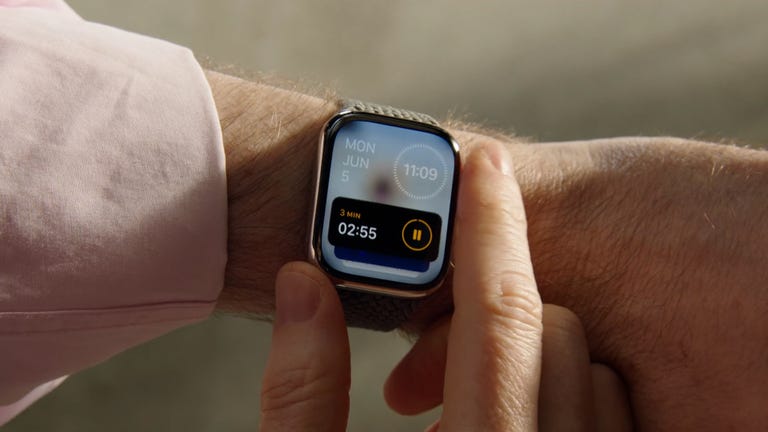
04:44
WatchOS 10 widgets could make the Apple Watch easier to use
The Apple Watch has gained many new features and functionality since its 2015 debut, especially when it comes to health. But the general interface has largely remained the same.
That’s about to change in WatchOS 10 with the introduction of widgets, or informational cards that are accessible from the watch face with a twist of the digital crown. You’ll be able to add widgets for viewing the weather forecast, reminders and news headlines among other tidbits, similar to the iPhone. This should mean significantly less tapping and swiping would be required to set a timer or view your next meeting.
The order of these cards will contextually change depending on factors like the time of day similar to the iPhone’s widgets, which Apple calls the “smart stack.” The idea is to show the right data as you need it throughout the day. For example, the weather might appear first in the morning, while a medication reminder may surface at night.
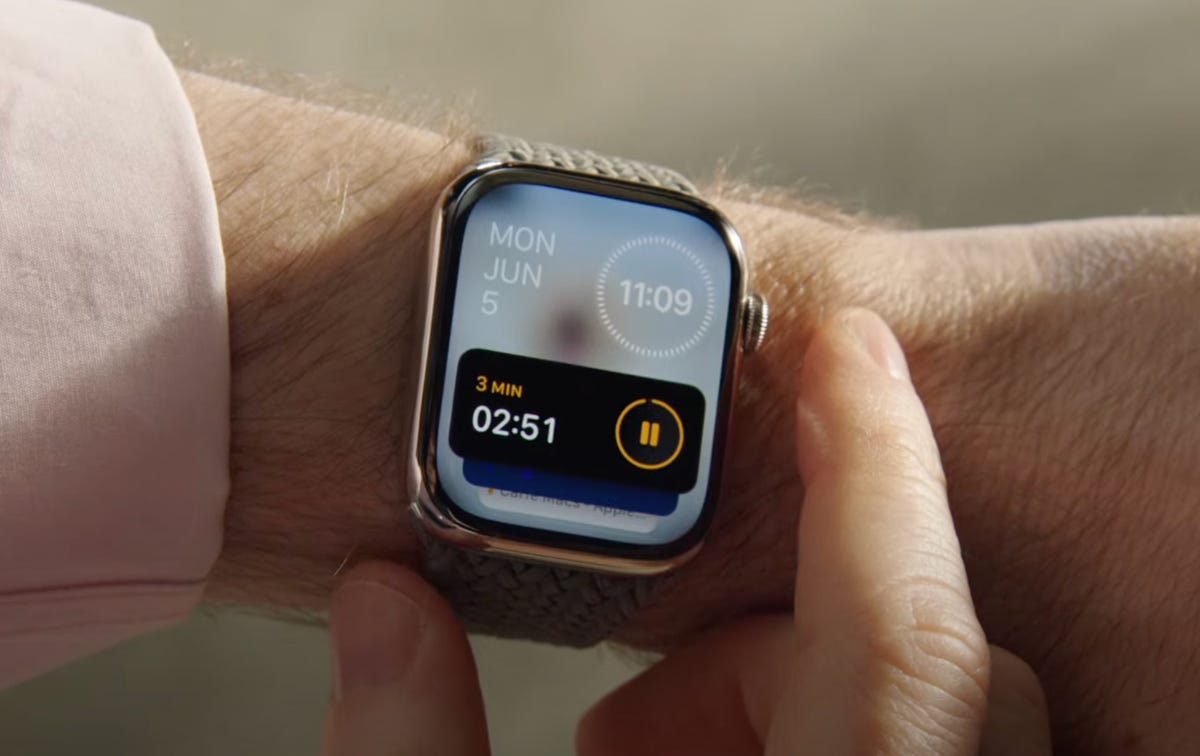
The timer widget in WatchOS 10.
It might sound like a small update, yet it’s one that could make the Apple Watch better at serving up relevant information with minimal effort. When the first Apple Watch arrived eight years ago, some reviewers criticized the device’s software as being too complicated and complex.
Those concerns have seemingly faded away as the Apple Watch became more prevalent. According to Counterpoint Research, Apple accounted for 26% of the global smartwatch market as of the first quarter of 2023, more than any other company. But the arrival of these new widgets, along with other updates like redesigned apps and a shortcut that launches the Control Center menu with the side button, show that there’s still work to be done when it comes to making the Apple Watch more intuitive.
Apple’s intention to have your Apple Watch unlock the world around you has been evident for a while; it announced the ability for the watch to double as a key to your office, home or hotel in 2021, for example. That raises the question of why Apple waited until 2023 to update the interface in a way that makes relevant information more easily accessible.
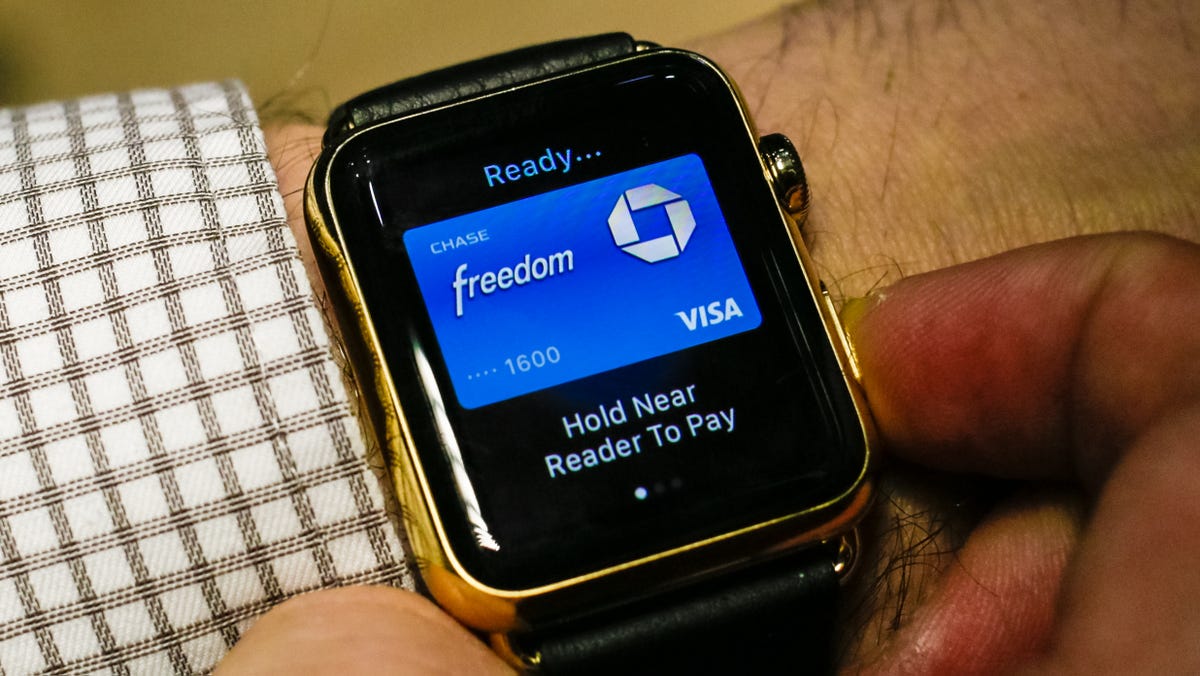
Apple Pay was available even on the first Apple Watch.
Lynch said it comes down to a combination of user feedback and hardware improvements that enable the machine learning that’s necessary to power the smart stack. The company also didn’t want to change the Apple Watch’s user interface too often or in a way that would feel jarring.
“It was informed by all of our experiences that we’ve had over time, of course, about how people interact with the watch,” he said.
Apple’s approach to new features is about hardware and software
Many of the Apple Watch’s major changes come down to how the software and hardware work together. That’s especially true for the Apple Watch’s health tracking functionality, which also gets an upgrade in WatchOS 10. There are new metrics for cyclists and additional features like topographic maps in Apple Maps for hikers, a mood-logging tool and the ability to detect time spent in daylight.
In some ways, Apple takes a different approach than its competitors when it comes to how health data from the watch’s sensors is used and presented throughout the interface. Rivals like Oura and Google’s Fitbit, for example, crunch certain readings to generate a “readiness score,” which communicates whether your body is ready for a tough workout or in need of a rest day.
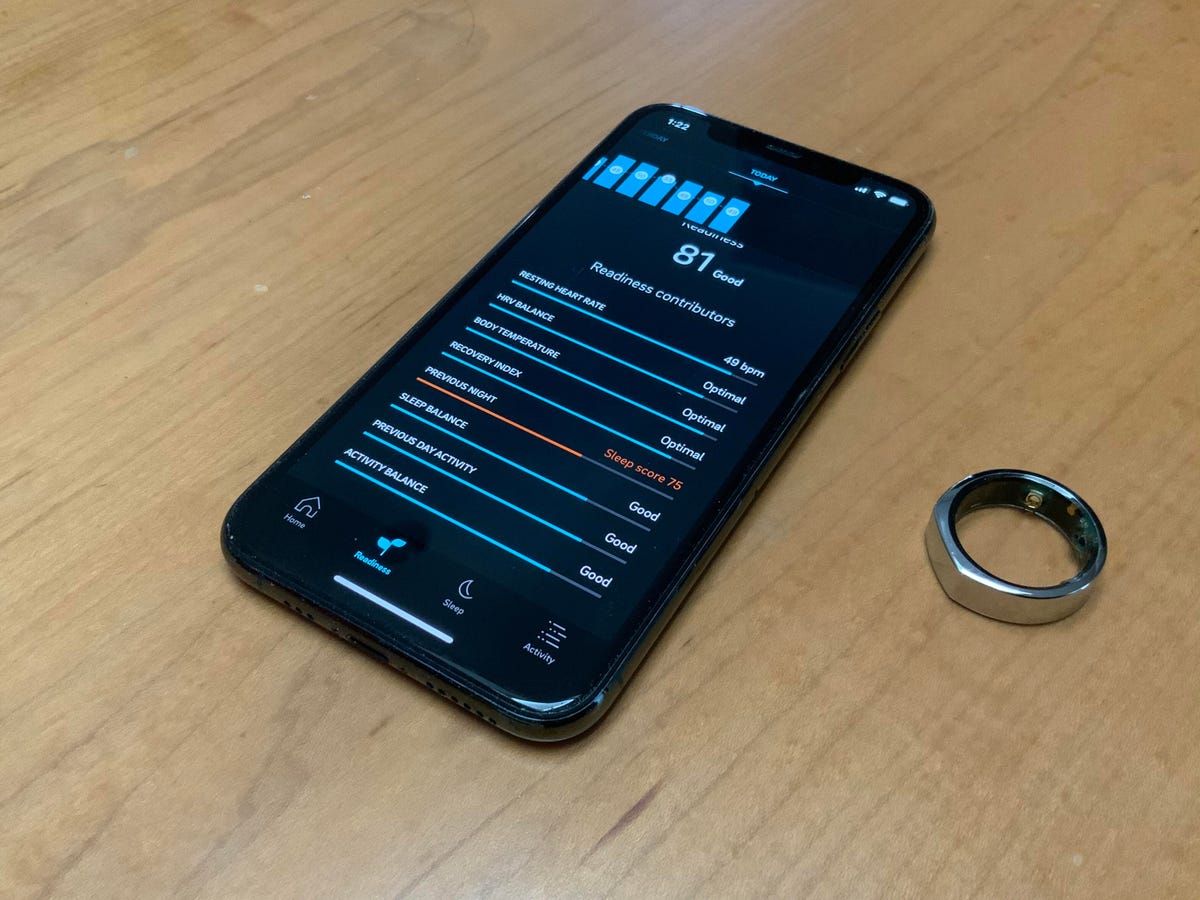
The Oura app’s daily Readiness score, a combination of multiple measurements.
The Apple Watch lacks an equivalent feature in WatchOS 10, and that’s intentional. When asked about whether Apple envisions recovery-related insights like a readiness score for the Apple Watch, Lynch pointed to the company’s approach for developing new features. He said Apple’s strategy focuses on solving broad problems that impact a wide range of people, adding that the company is “optimistic” about getting new health insights from the watch’s existing sensors.
“We actually look at a combination of what we can sense and what are the top health challenges that people have in the world,” he said. “And what’s the intersection of what we can sense, and what are those issues?”
That doesn’t mean Apple will never offer a readiness score-like feature, said Deirdre Caldbeck, director of Apple Watch product marketing, who also spoke with CNET. It’s just that the company focuses its resources on features that it thinks will be universally impactful and offer actionable insights.
“In our discussions and our debates and our decision making, we do try to keep those things in mind because of course Apple Watch is so broadly applicable to so many people,” Caldbeck said.
It’s not just about the insight Apple can provide, but also how that data is presented. Lynch described the Apple Watch as a “supportive partner” that applauds your achievements but doesn’t shame you for missing your stand reminder. Oura takes a similar approach; the company previously told CNET it tries to communicate “truth” and “positivity” in its notifications. Even the nudge you feel on your wrist and the ping you hear when receiving a notification on your Apple Watch was meticulously planned.
“We designed those by actually ringing the material of the Apple Watch case with a little hammer,” Lynch said. “And we recorded the ‘ding’ noise it made so it sounds like the watch itself is being rung.”
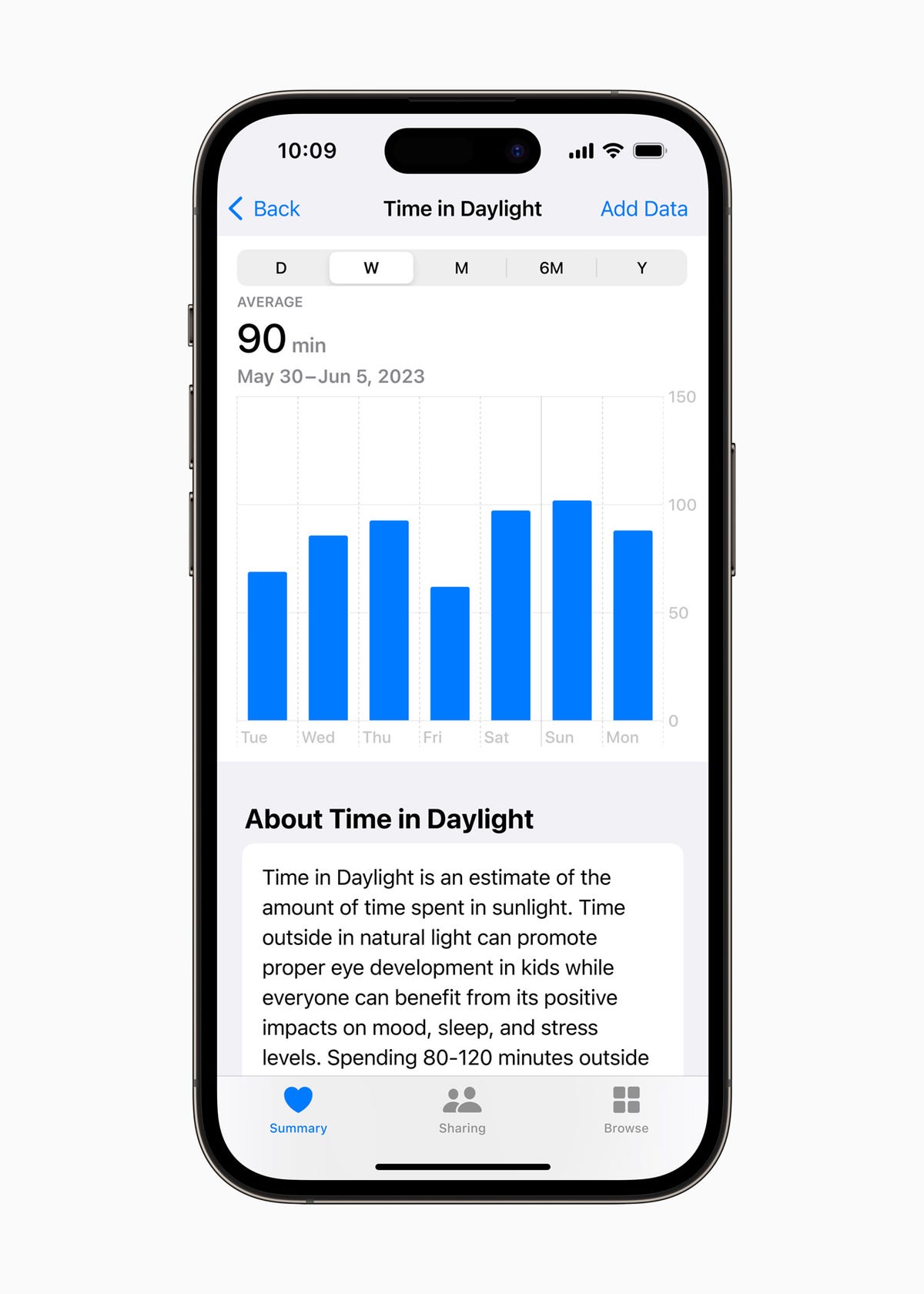
A screenshot of the daylight detection feature coming in WatchOS 10.
But one example of how Apple is leveraging the watch’s sensors in a new way in WatchOS 10 is in the new daylight detection feature. It uses the Apple Watch’s ambient light sensor, along with input from other sensors to determine whether a person is outdoors, Lynch said. Apple is positioning this as a way to help younger users potentially prevent myopia, or nearsightedness, since the Myopia Institute says time spent outdoors can reduce the development of the condition in children.
Apple had been researching eye health and realized the Apple Watch’s ambient light sensor to help figure out whether someone is outside, Lynch said.
“We start with storytelling,” Lynch said. “We start with, ‘Here’s a problem in the world, and let’s tell each other a story around maybe how the world could be different.’ That leads us then to designing and engineering and all that stuff.”
The Apple Watch’s competition and what’s next
As the Apple Watch has evolved and gained new sensors, it’s become increasingly focused on health. But it’s also a big part of Apple’s effort to free us from screens, an objective that the company reiterated when introducing its Vision Pro headset earlier this month.
Apple seems to be succeeding at that goal so far, considering the company’s wearables business is now the size of a Fortune 150 company. Yet the competition is growing; Google entered the smartwatch space with its Pixel Watch last year, and Google and Samsung joined forces in 2021 to redesign the software that powers Android smartwatches. Samsung’s next smartwatches are expected to debut next month, complete with new software that makes sleep statistics and other health insights more prominent.
Apple calls WatchOS 10 a “milestone” for the Apple Watch. That may be telling of the smartwatch’s role in our lives at a time when we’re surrounded by an increasing number of screens and sensors. American households owned an average of 16 connected devices as of 2022, according to research firm Parks Associates.
Perhaps now more than ever, there’s a need for gadgets like the Apple Watch to help us navigate and manage those devices. WatchOS 10, with its contextual widgets, redesigned apps and ability to swap contact data with iPhones through a new feature called NameDrop, seems like an attempt to do just that.
Lynch couldn’t say what’s next when asked about other ways the Apple Watch could become a so-called key to the world around you.
But the clue could be sitting in our pockets.
“What do you use a wallet for today, and do you still have things in your wallet?” he asked. “So that would be another area to think about in terms of maybe over time, how we can reduce the amount of stuff you have to carry around with you.”
